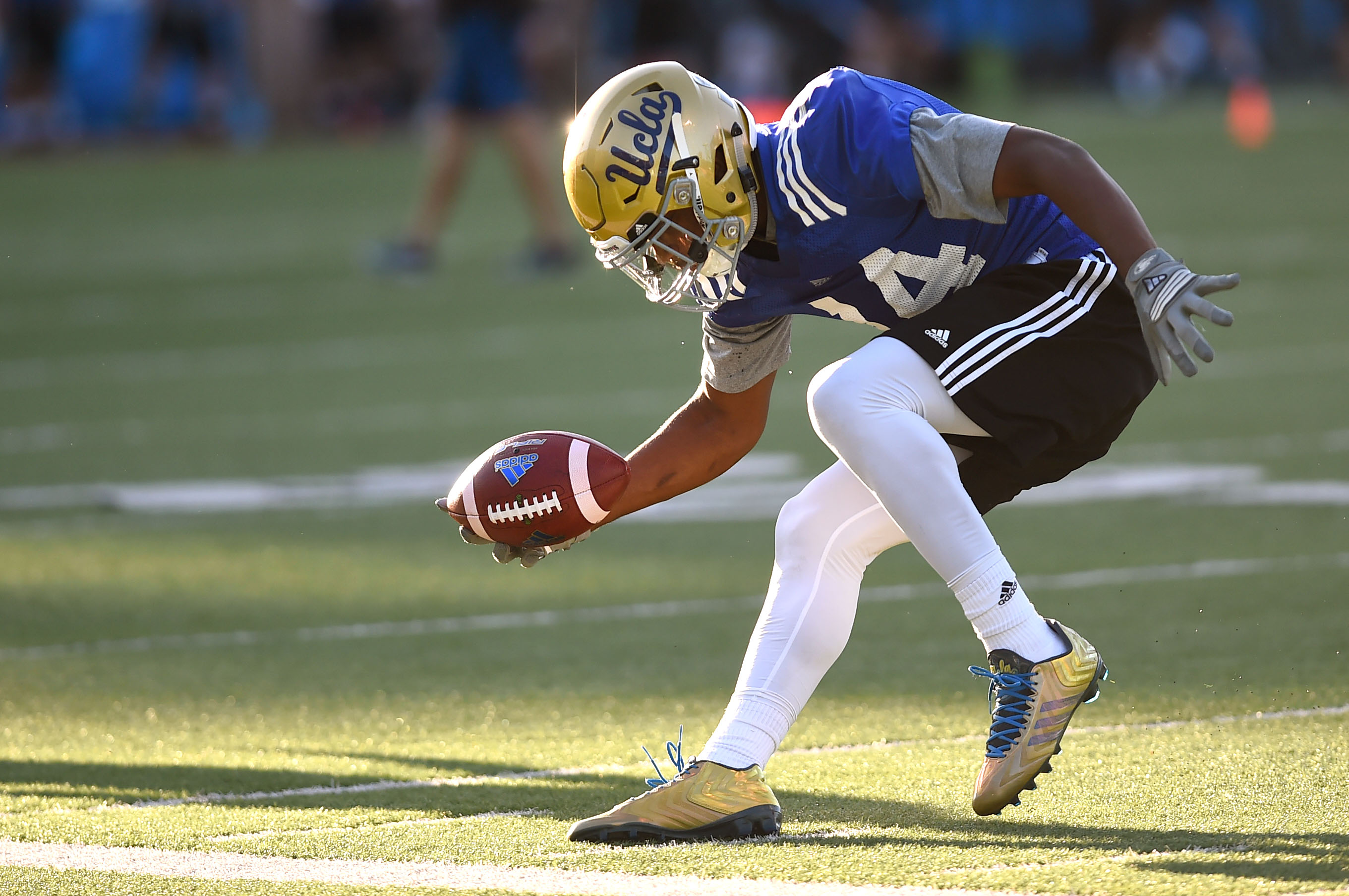
UCLA’s Mossi Johnson catches a pass during spring football practice on April 2 at Spaulding Field.(Andy Holzman/Staff)
UCLA has not produced a 1,000-yard receiver since 2011. Looking at the state of the Bruins’ offense, it’s a good bet that the drought will extend for another season.
Such is the nature of offensive coordinator Noel Mazzone’s scheme. For three years, UCLA has divvied up targets between bevy of receivers, racking up significant total yards without creating a dominant No. 1 wideout. In 2014, Jordan Payton became the first Bruin to record more than 60 catches in the Jim Mora era; that same season, 12 others in the Pac-12 cleared that same threshold.
Payton might crack four-digit yardage as a senior, but the chemistry he built with Brett Hundley might not necessarily carry over when UCLA picks a new starter. (Even last year, Payton’s production tailed off as the season progressed; he didn’t top 58 yards or catch a single touchdown in his last four games.) This is not to say that the receiving corps are in any real trouble. After all, they return all but one member, and add a few others.
Devin Lucien’s decision to transfer out bodes well for Arizona State, but his contributions to the Bruin offense last season (225 yards, 2 TD) are easily replaceable. Besides Payton and Devin Fuller, who combined for 42 percent of UCLA’s receptions, three other receivers each notched at least 20 catches. Of those, the most exciting might be Mossi Johnson. The 6-foot, 185-pound target isn’t afraid to take a hit, and has been one of the team’s offseason stars for the past year. He looks like he’s fully regained his speed again after tearing multiple knee ligaments in 2012, and turned his one-on-one matchups against linebacker Myles Jack into one of the must-watch portions this spring.
Toward the end of camp, Fuller — who has started the past two seasons as an inside receiver — shifted outside, a switch that could very well become a full-time move. While that change might require a bit of adjustment on Fuller’s part, it would create an opportunity for Johnson to see the field more. Having him play opposite the sure-handed Thomas Duarte would make it difficult for opponents to defend the middle of the field.
A few other Bruins flashed enough this spring to project promising futures. Kenneth Walker has long been one of the fastest players on the team, and might finally have improved his hands enough to carve out a larger role. Redshirt freshman Jordan Lasley has a hot-headed streak, but bottled that up for the most part in the latter half of spring camp. Alex Van Dyke moves well and has great size, though he might be another year away from breaking out. Former quarterback Aaron Sharp looked more comfortable in his new position than anyone could have reasonably expected.
The most interesting twist to the offensive scheme will be how UCLA implements its new tight end packages, created for five-star recruit Chris Clark. Former offensive lineman Colby Cyburt switched to offense this spring as a stand-in for those situations, but those plays weren’t called frequently through four weeks of camp. That likely ticks up when Clark arrives on campus. Multi-talented fullback Nate Iese could also be a factor when the Bruins want to create mismatches with a big, athletic pass catcher.
Projected two-deep
X: Jordan Payton, Kenneth Walker/Jordan Lasley
Slot: Mossi Johnson, Darren Andrews
Y: Thomas Duarte, Tyler Scott/Aaron Sharp
Z: Devin Fuller, Eldridge Massington
Previous position reviews:
Offensive line
Running backs
